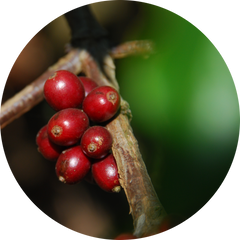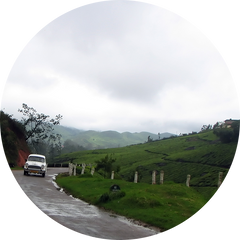The Coffee Killer - Roya Rust Crisis:

Michael King, owner of Bean North, explains the effect “It is basically devastating the coffee harvest in Central America right now where countries like Guatemala are down 60%. Some of the cooperatives we’ve purchased from for years – like one in El Salvador, has 0 coffee to export this year.”
Hemileia vastatrix is a fungus that adds a rust-like appearance to the coffee leaf, hence the name coffee rust, or roya in Spanish. With this fungus, there is a lack of greenery on the coffee plant and the primary source of photosynthesis is attacked. In combination with climate change, it makes the fungus extremely challenging to deal with. The dry season can usually kill off the fungus, however because the season was not as dry as expected, it started to spread rapidly.
Michael explained that because of the changing climates, the rains coming at the wrong time in the growth process of the plant, the coffee cherry ends up absorbing the rain which causes it to fall to the ground. This leaves the cherry underdeveloped, lacking taste and is unusable.
The fear in Central American farmers is immense as their source of income has the potential to be completely depleted. With good reason – take a look back in history and you’ll see that there was another country that lost the fight against Roya.
In 1825 Sri Lanka was a major producer of coffee. Over 1700 coffee farmers existed and that number was rapidly increasing – even the name “the coffee rush” was coined regarding this incredible industry growth. However, when Roya hit, the coffee crop became more and more challenging to maintain. By the 1870s there was not a single producer left on the island of Sri Lanka.

In today's times and despite the recent media attention, this isn't new news. In 2013, Roya was declared in a state of agricultural emergency in Guatemala and the government released a $13.7 million dollar aid to farmers for pesticides to help fight the disease. This pesticide is one of the more reliable solutions; however it is costly, labour intensive and deems coffee no longer organic.
Bean North and their buying cooperative acted fast by developing a Roya Fund to help the farmers they buy from understand the preventative methods as well as treatments for the coffee rust. Every bag of Central American coffee sold by Bean North has a portion going towards that fund.
“With that fund we’ve brought all the farmers we purchase from in Central America down to an amazing community down in Honduras that has fought Roya organically.”
“Small-scale farmers are demonstrating that their best defense is to increase the life and nutrition in the soil and the vitality, and thereby the natural defenses of the trees themselves, through identification and implementation of intensive, organic practices.”
However, it’s too early to say if this solution is enough for the plants to fight off this fungus. What we do know is that there are most definitely some speed-bumps ahead which is causing uncertainty with the farmers and their crop.




